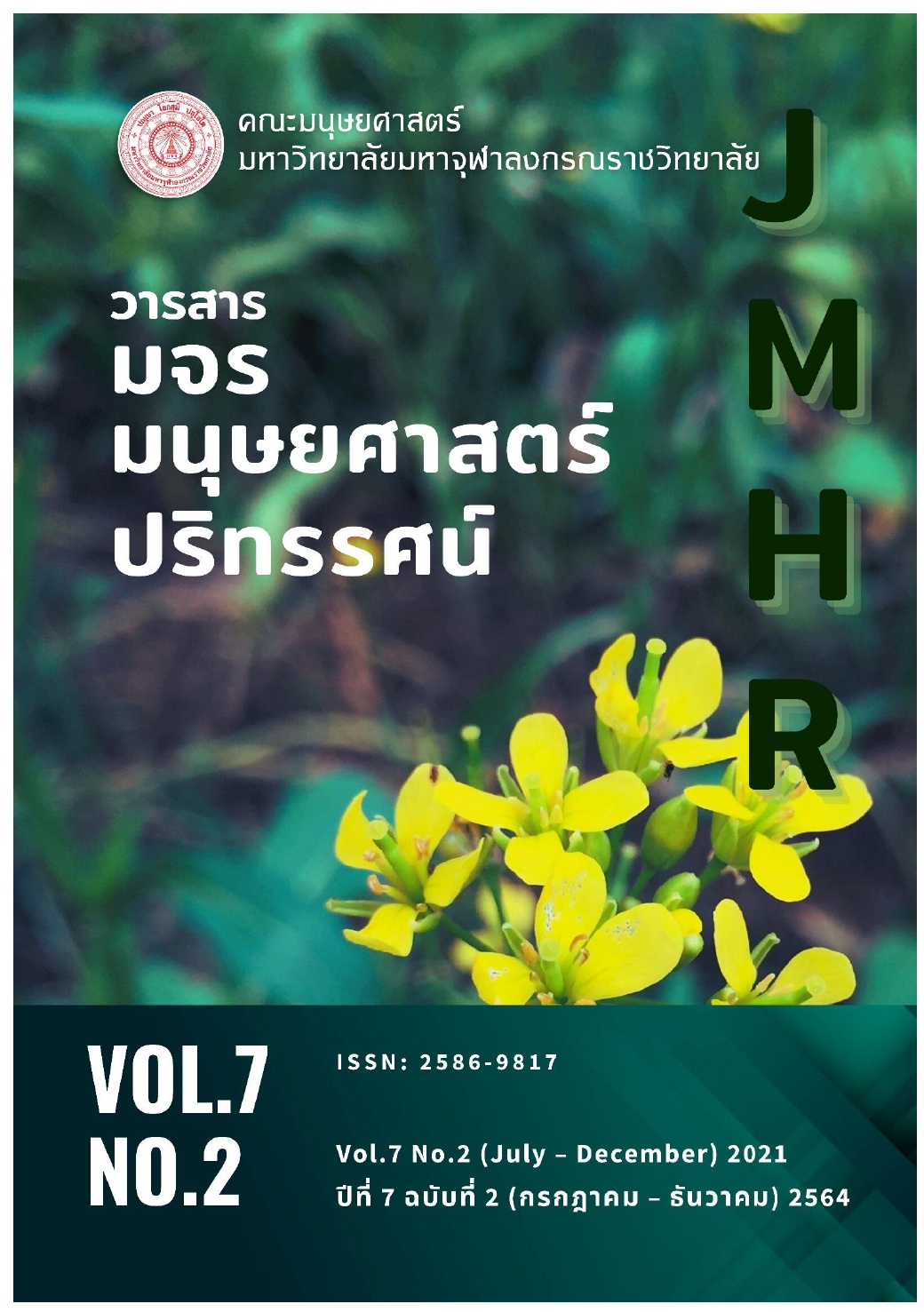มองทุกข์ให้สุขได้ตามแนววิถีพุทธ
คำสำคัญ:
ความสุข, ความทุกข์, คุณธรรม, วิถีพุทธบทคัดย่อ
ความสุขขั้นพื้นฐานในชีวิต คือ ความสุขจากการมีปัจจัยสี่ในการดำรงชีวิต และความสุขที่เกิดจากความมีทรัพย์ ได้ใช้จ่ายทรัพย์ ไม่เป็นหนี้ และความสุขจากการประพฤติไม่มีโทษ รวมถึง ความสุขที่เกิดจากการมีชื่อเสียง ความสุขที่เกิดจากการได้รับการยอมรับจากสังคม เป็นต้น ความสุขเหล่านี้สามารถแสวงหาได้ไม่ยากนัก แต่หากต้องการความสุขที่แท้จริง สมบูรณ์ เป็นความสุขที่เกิดขึ้นในใจ เป็นความสุขที่เป็นอิสระไม่ต้องพึ่งพาความสุขจากวัตถุ นั่นคือ การมีความสุขจากคุณธรรม ความดี และการมีปัญญาที่เข้าใจถึงความเป็นธรรมชาติในโลก เข้าใจในหลักไตรลักษณ์ที่แสดงถึงความเป็นปกติธรรมดาของโลก และการเข้าใจในสาเหตุแห่งการเกิดทุกข์ตามหลักอริยสัจ (ทุกขสัจ) มองทุกข์ว่าเป็นธรรมชาติ เป็นสิ่งที่เกิดจากตัวมนุษย์เองที่ยึดเอาความทุกข์มาไว้กับตัวและเข้าใจในหลักธรรมว่า ทุกสิ่งมีการเกิดขึ้น มีการเปลี่ยนแปลง มีการแตกสลายเป็นปกติธรรมดาตามหลักไตรลักษณ์ ได้แก่ อนิจจัง ทุกขัง อนัตตา และการเข้าใจการเกิดขึ้นและดับไปของเหตุและปัจจัย จะทำให้มองเห็นทุกข์ เข้าใจทุกข์ จนสามารถละวางความทุกข์นั้นจนเกิดความสุขขึ้นได้ในที่สุด
เอกสารอ้างอิง
กลุ่มงานพัฒนาวิชาการและประชาสัมพันธ์ โรงพยาบาลนครสวรรค์ราชนครินทร์. (2562). จะปรับตัวอย่างไร…ให้ผ่านพ้นช่วงเวลาแห่งความทุกข์ยากครั้งนี้ไปได้. สืบค้น 18 ธันวาคม 2564, จาก https://nph.go.th/?p=5675
คัคนางค์ มณีศรี และ วัชราภรณ์ บุญญศิริวัฒน์. (2545). ความสุขคืออะไร. สืบค้น 30 มิถุนายน 2564, จาก https://smarterlifebypsychology.com/2017/09/27/ความสุขคืออะไร/
ตนุภัทร โลหะพงศธร และ ณัฐมน สุนทรมีเสถียร. (2564). ความสุขสร้างได้ เปลี่ยนชีวิตให้สุขใจอย่างยั่งยืน ด้วยจิตวิทยาเชิงบวกและแบบจำลอง PERMA. สืบค้น 28 มิถุนายน 2564, จาก https://becommon.co/life/heart-perma-model-positive-psychology/
ธีรวัส บำเพ็ญบุญบารมี. (2555). วิธีการเข้าถึงธรรมที่ออกจากกามคุณ. สืบค้น 29 มิถุนายน 2564, จาก https://www.gotoknow.org/posts/512450
ธัมมโชติ. (2559). พระไตรปิฎกออนไลน์. สืบค้น 18 ธันวาคม 2564, จาก https://tripitaka-online.blogspot.com/2016/09/tpd-main.html#!
พระพรหมคุณาภรณ์ (ป.อ. ปยุตฺโต). (2559). พจนานุกรมพุทธศาสตร์ ฉบับประมวลธรรม (พิมพ์ครั้งที่ 34). กรุงเทพฯ: มูลนิธิการศึกษาเพื่อสันติภาพ พระธรรมปฎก (ป. อ. ปยุตฺโต).
มหาวิทยาลัยมหาจุฬาลงกรณราชวิทยาลัย. (2560). พระไตรปิฎกภาษาไทย (ฉบับพิมพ์ถวายเป็นพระราชกุศลแด่พระบาทสมเด็จพระปรมินทรมหาภูมิพลอดุลยเดช). กรุงเทพฯ: โรงพิมพ์มหาจุฬาลงกรณราชวิทยาลัย.
วิกิพีเดีย สารานุกรมเสรี. (2563). ทุกข์. สืบค้น 28 มิถุนายน 2564, จาก https://th.wikipedia.org/wiki/ทุกข์
สมเด็จพระพุทธโฆษาจารย์ (ป.อ.ปุตฺโต). (2553). พุทธธรรม ฉบับปรับขยาย (พิมพ์ครั้งที่ 31). กรุงเทพฯ: มูลนิธิบรรจงสนิทและสำนักสหปฏิบัติพร้อมทั้งคณะผู้ศรัทธา.
“_______”. (2537). ปฏิบัติไม่ถูก ยิ่งห่างสุข ทุกข์ทับถม. สืบค้น 24 มิถุนายน 2564, จาก https://www.payutto.net/book%20content/ปฏิบัติไม่ถูก-ทุกข์ทับ/
“_______”. (2564). พจนานุกรมพุทธศาสน์ ฉบับประมวลศัพท์ (พิมพ์ครั้งที่ 35). กรุงเทพฯ: บริษัท สหธรรมิก จำกัด.
สุขีโว ภิกขุ. (2520). อริยสัจคืออะไร? (พิมพ์ครั้งที่ 12). กรุงเทพฯ: โรงพิมพ์มหามกุฏราชวิทยาลัย.Layard, R. (2005). Happiness: Lessions from a new science. Couns.Psychot. Res. 6: 302-303
Manion, J. (2003). Joy at work: Creating a positive workplace, J. Nurs. Admin. 33: 652-655.
University of New Hampshire. (2021). Positive Psychology Strategies for Increased Happiness, Psychological & Counseling Services. Retrieved June 3, 2021, from https://www.unh.edu/pacs/positive-psychology-strategies-increased-happiness






